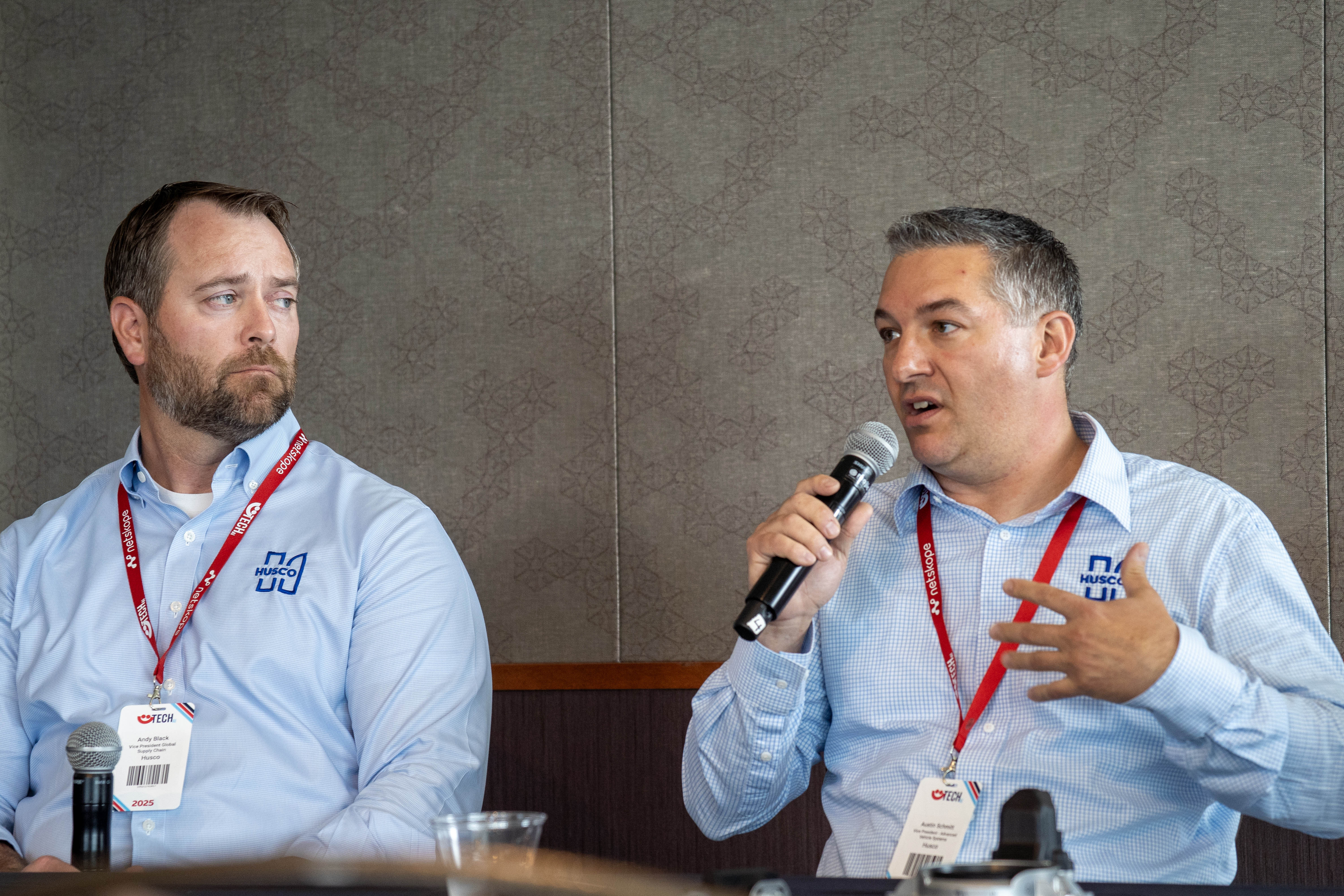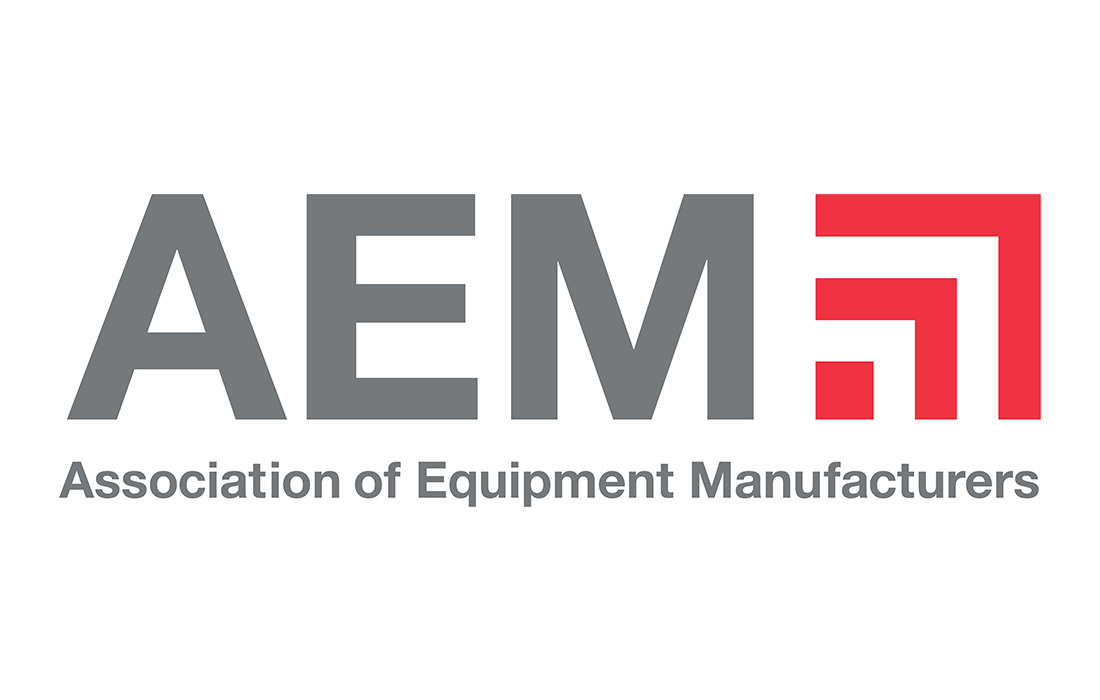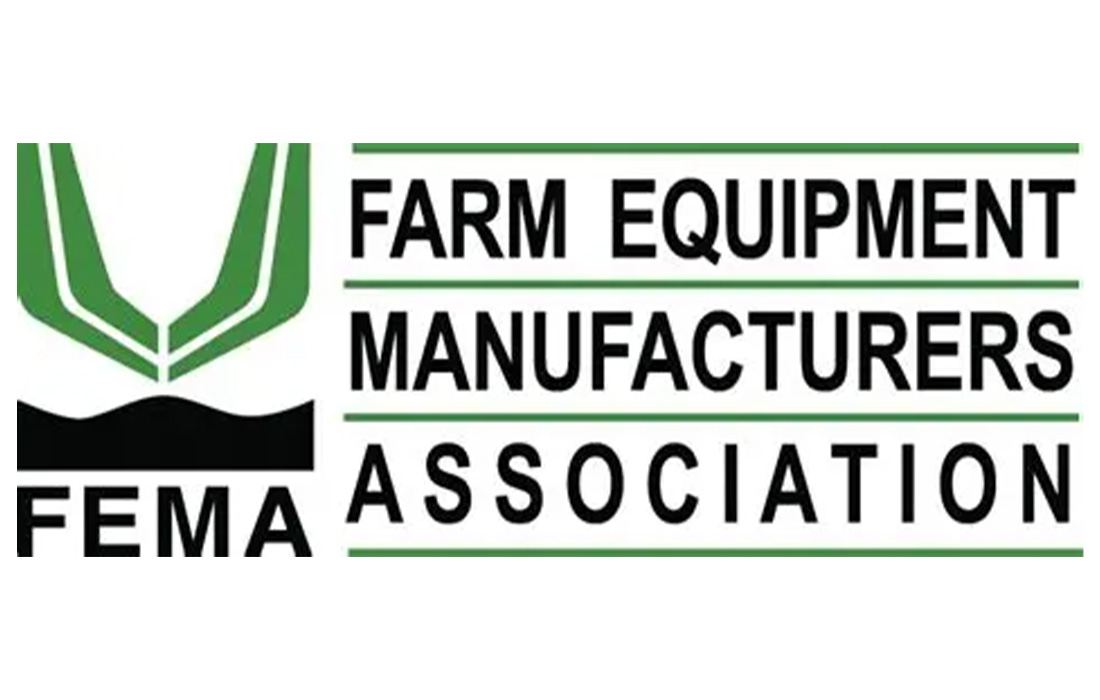AEM member company Husco participated in a feature panel during Milwaukee’s premier tech event, Summerfest Tech, in June. Husco Director of Talent Aquisition and Development Brittany Kulka moderated a discussion between Technical Director of Advanced Manufacturing Group Jake Wampole, Vice President of Global Advanced Engineering Austin Schmitt, and Vice President of Global Supply Chain Andy Black, which touched on the evolution that the equipment manufacturing industry is undergoing currently, and disruptions and successes that each of them has witnessed.
Kulka: For the last 80 years Husco has been involved in the off-road equipment industry, leading the design and manufacturing of hydraulic and electromechanical valves. How has the average job site evolved over that time?
Black: Going back to when Husco was created, there were things like steam and coal, and lots of operations were done manually. What we’ve seen changing over the last decade is a transition toward connectivity and technology in general. Things like laser targets, lidar, drone surveying, and GPS and satellite companies are getting more engrained into the jobsite.
At Husco we do have a lot of machine knowledge, and there are a lot of companies entering this market that are more data-driven – in the past, there was no way to take that data and use it to help operate machinery, no place to connect that input to the machine. We, in turn, have entered into this new space with Husco’s Exacto product, which is a digital machine control system designed to enhance the performance of hydraulic machines. It really can boost efficiency for operators and allows for full automation.
If you think about it, this space is really challenging to work in, and there are so many different components that must work together. But our experience as a component manufacturer really allows us to enter this unique space and quickly bring unique solutions to market.
Kulka: Electrification is just one disruption that the equipment manufacturing industry has faced over the last 10 years. What can you share about what Husco is doing differently as the equipment industry evolves?
Schmitt: I think that many of us would be relieved if electrification were the only disruption that our industry experienced. Over the last five years, there have been so many disruptions to the equipment manufacturing industry and the manufacturing industry. It seems like every day there is a new supply chain disruption, making it hard to get the necessary materials to complete our orders. Things like shipping disruptions make it hard to predict timelines. Competition from China is also a factor for us – the Chinese are great at making components. And even more recently, we’re seeing tariffs shake things up – it seems that the only thing that’s consistent in our industry is that everything changes every day, at a rate that’s extremely rapid.
When it comes to predicting disruptions, allowing transformation, and relating that to product strategy, Husco has a great mentality. Our culture emphasizes intelligent risk-taking – we’re going to take bets, but we’re going to back those bets up with data. Even just five years ago all our products were for internal combustion engines; now, around 50% of our products have nothing to do with controlling hydraulic oil. If you think about a company whose core competency is in electrohydraulic products, this is a really significant transformation. Our strategy now involves creating technology that can be put into any type or brand of equipment, so that we can be even more agile in the future.
Kulka: As our industry has seen an increasing need for complex products, manufacturing processes have had to adjust quickly to involve things like automation. How is Husco innovating to meet these needs?
Wampole: Innovation in the automation space means constantly evolving. Nowadays, we’ve got smart devices on the line that are going into heavy machinery, and these devices need to be individually calibrated and tested. One of our key innovations is the continual development of automation and assessing new technology and new vendors to make it all happen. We need to ensure that we’re on top of whatever is out there, and that we keep pace with our evolving industry.
Kulka: Continuing with the theme of evolution, let’s talk about AI and how Husco is currently using AI.
Black: Data uses have been huge for us. We also now have smart sensors embedded into our operation, which can monitor airflow and electrical load, and they almost serve as a preventative maintenance measure. AI has come a long way in the last three years, and we’re excited to see how it evolves and grows in the future.
Schmitt: I think the key word in that question is able – one of the things that we do great at Husco is our ability to attract and retain talent, and it enables us to make the most out of a tool like AI.
We think about AI as an enabler and as an augmentation tool. We generate a large amount of data at Husco, whether it’s in our initial analysis, lab testing, or production cells. When we go to use that data to make decisions, there is a lot of manpower that is needed to take that data and turn it into something useful. Currently we’re using AI to enable quick processing of data to make good decisions in our engineering process.
In addition, when we think about marketing our products, we need to think about how we can market our skillset. Our marketing team uses AI to get ready for career fairs, trade shows, and social media posts. AI helps our small team share our story and create a lot of content.
Kulka: Can you share any recent successes that you’ve witnessed within our industry?
Wampole: Our success is really a journey. When talking about product roadmap and strategy, it’s one thing to design a new product – we now have to align our business strategy with the current environment, and with our new products. We used to create relatively simple parts, and things are a lot more complicated now. We need to assess our supply chain, try to avoid being impacted by tariffs, and step around geopolitical shakeups that would affect our business.
When thinking about manufacturing strategy, I think it’s about how to get the most out of the investment we’re putting on the shop floor, and I think we’ve done an excellent job at doing that.
Kulka: Husco has a longstanding history of philanthropy in its local community. What are some ways that you personally give back?
Black: One of the ways my team gives back is getting involved in local schools and helping students to learn coding. We’re engaged with the local universities, and we try to give students opportunities to learn about careers in engineering and manufacturing. We bring in 50-75 student employees a year, who are getting real job experience, and who can leave saying they got a fantastic experience – or not leave at all!
Wampole: Our culture and our people choose so many ways to get involved, from United Way to judging competitions – this culture has rubbed off on everyone and we have this energy. We’ll continue to support the development of young people and create opportunities for them to get involved, to see what a career in manufacturing could look like for them.
Schmitt: Husco has facilitated so many opportunities to give back, and we can choose to get involved with things that resonate with us personally. I am really passionate about bridging the gap between STEAM education and real-world engineering. In the real world, we deal with unexpected factors a lot, which are not always taught in school. We just started with this program called Full STEAM Ahead, where we brought in middle schoolers to our engineering lab and taught them how to be agile and create real-world solutions. This also helps them get involved in the manufacturing industry and connects them with a future career path.





